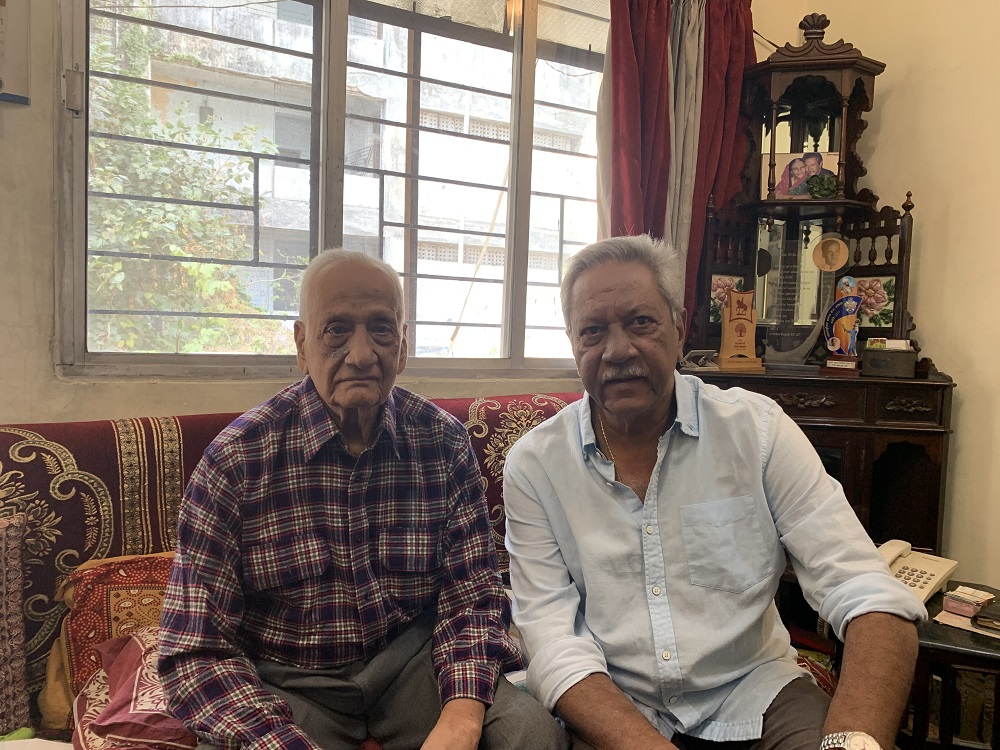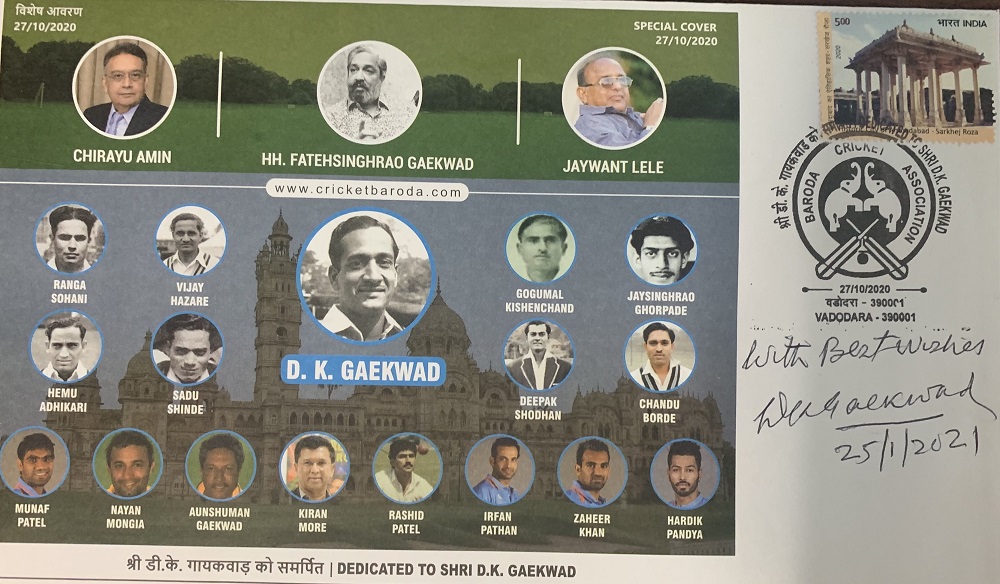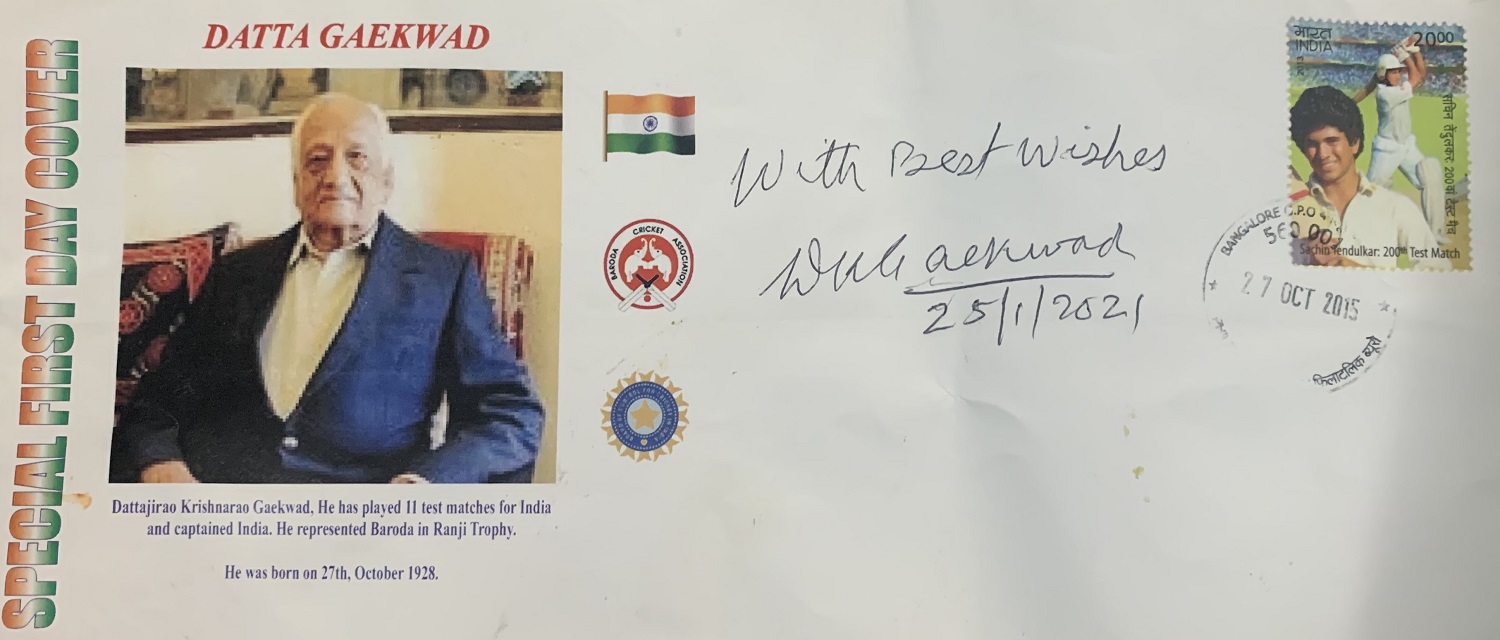News
A talk with the oldest Indian Test cricketer ‘DK sir’
At the age of 92, Dattajirao Gaekwad is currently the oldest living Indian Test cricketer
The city of Vadodara (formerly Baroda) got its name because of the presence of large number of Banyan trees. Going around this clean and green city, one can’t miss the impact of the royal family of the Gaekwads. Be it the Lakshmi Vilas Palace or the Maharaja Sayajirao University, the imprint is to be seen everywhere.
And like many other royal families in the country before independence, they left no stone unturned for the upliftment of cricket. The Moti Bagh ground is a living example of the rich cricketing culture of the city. However, there is another person who has added many pearls to the cricket crown. Fondly called as DK Sir in the cricket community, Dattajirao Gaekwad has looked after the game in the city just like a Banyan tree. At the age of 92, he is currently the oldest living Indian Test cricketer.

Talking cricket with him was like sitting under a tree and taking comfort in its shed. Although he doesn’t follow much cricket these days and doesn’t discuss about the current matches, but I am sure he would have been happy with Baroda’s performance in the recently concluded Syed Mushtaq Ali Trophy. One also wonders what his take would have been on the India-England Test series.
The former Indian captain has seen it all. From the likes of CS Nayudu (who had been employed by Maharaja Pratap Singh) to the recent players like Nayan Mongia, he has either played or coached them. Dattajirao is also related to the royal family and about this he said, “When I was about eleven years old, I went and stayed in the palace. Fatehsinghrao who was a prince then wanted a companion and a committee was formed to select the same. I was selected along with two more boys. So, we used to stay in the palace with the young prince who was two years smaller to me.”
DK had already developed an interest in cricket at the age of around seven years. But cricket wasn’t his only area of expertise. He was part of the school (Maharani Chimnabai High School) team that won the inter-school hockey tournament as well. “I think god me as a sportsman”, he laughed while narrating these stories.

“Apart from teaching the finer points of the game, CS Nayudu also taught me to bowl leg-spin”
His cricketing talent was further nurtured in the palace with the arrival of CS Nayudu. Attributing the knowledge that he gained from CS, he said, “Apart from teaching the finer points of the game, he also taught me to bowl leg-spin.” Later in his career, DK also got associated with CS Nayudu’s elder brother Col. CK Nayudu (who was a selector then) and he had a great respect for India’s first captain.
DK’s potential as a serious cricket was seen in inter-university cricket, where he initially played for Bombay University before the Maharaja Sayajirao University came up. Soon, he made it to the Baroda Ranji team in the 1947-48 season and was a stalwart for more than 15 years. During those days, Baroda had a number of players in the Indian team like Vijay Hazare, Gul Mohammad, Chandu Borde, Sadu Shinde and Amir Elahi among others.
He had umpteen stories to tell from the glory days of Baroda cricket and I was amazed that at this age he not only remembered some of his knocks including specific scores. He recalled his first century for Baroda, a knock of 108 at the Polo Ground (in Baroda) against Bombay (now Mumbai) comprising of players like Subhash Gupte, Polly Umrigar, Vijay Manjrekar and Madhav Mantri. Another of his significant contribution about which he spoke with a lot of pride was his century in each innings against Gujarat in the 1949-50 Ranji season. He also led Baroda to a Ranji Trophy triumph in the 1959 season. He had scored a century (103) in the finals against Services and along with Vijay Hazare who scored 203, had a crucial role to play in the victory.
“In Test cricket, my performance wasn’t good”
Unfortunately, he wasn’t able to translate this success in domestic cricket to the Test matches. And he was candid enough to admit the same. He said, “In Test cricket, my performance wasn’t good”. Nevertheless, he became India’s tenth captain when he led the team on its tour of England in 1959 without much success. “There were times when his cover fielding was brilliant, and his innings of 176 against Yorkshire at Sheffield made many wonder why he was not more successful”, wrote Wisden about him on the English tour.

It is now more than sixty years since that tour and in this time he has seen his son Aunshuman Gaekwad represent India, as well as his grandson Shatrunjay Gaekwad represent Baroda in Ranji Trophy. One may wonder the motivation that he had which inspired two consecutive generations after him to take up this wonderful game. “Money was never a motivation. We used to get very less match fees in those days. My only thinking was to enjoy the game and make a name for the country. In fact I never thought that I would become the captain. The goal was just to play the game”, he said.
With such profound words from him, I bid goodbye as he presented me with autographed copies of postal envelopes created by the Baroda Cricket Association in his honour. Well, those envelopes will be treasured collectables for me always, but then the experience that I had gained in this meeting is much more than any material goods. I sincerely wish him a healthy life ahead and may he share his treasure trove with many more cricket lovers.
